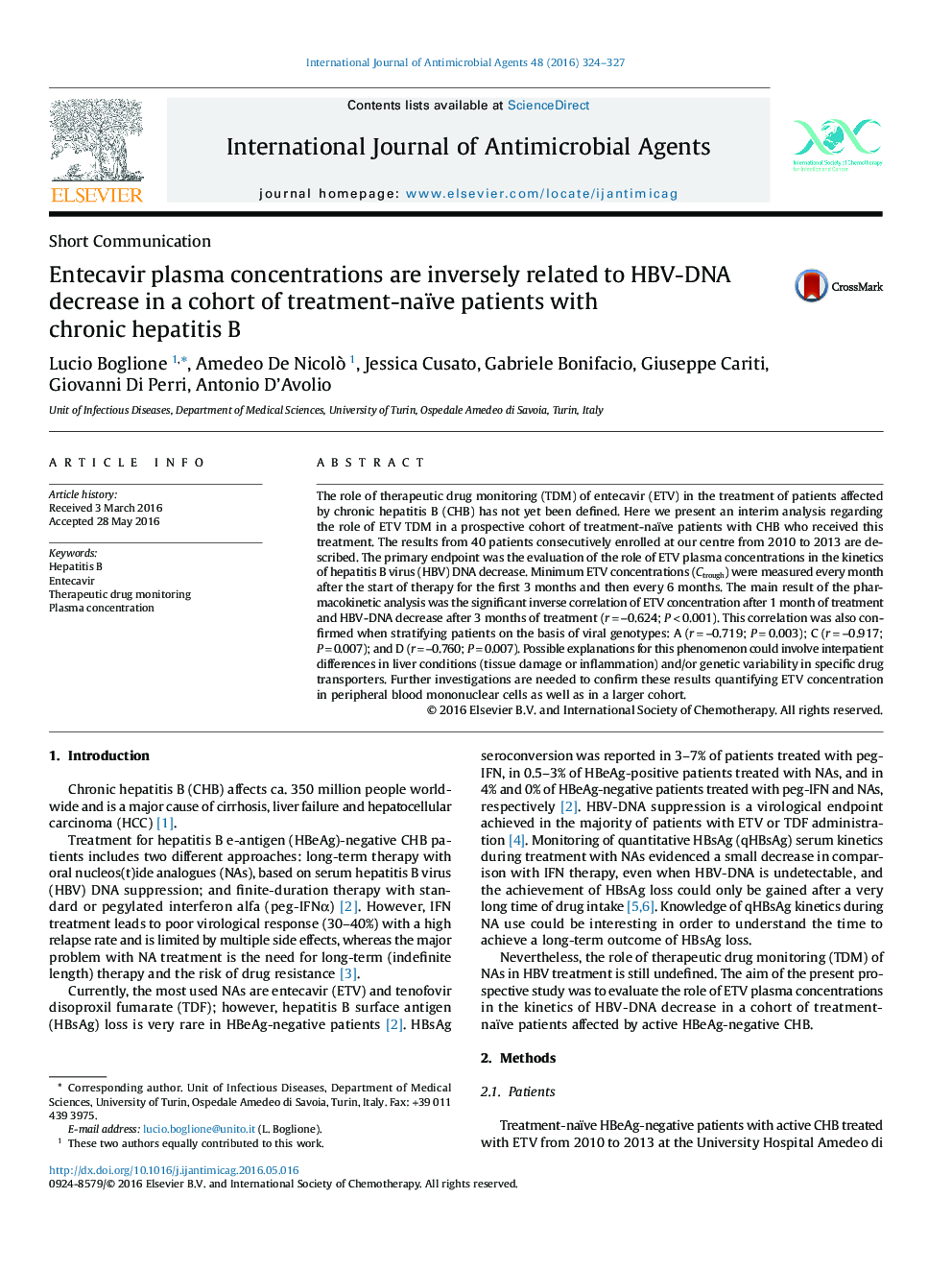| Article ID | Journal | Published Year | Pages | File Type |
|---|---|---|---|---|
| 3358407 | International Journal of Antimicrobial Agents | 2016 | 4 Pages |
•Evaluation of early response to entecavir (ETV) in a mixed HBV genotype cohort.•ETV pharmacokinetic evaluation in a clinical ‘real-life’ context.•Study of the concentration–effect relationship of anti-HBV treatment with ETV.•Evidence of inverse correlation between ETV concentrations and response.•Definition of an ETV plasma cut-off concentration for rapid response.
The role of therapeutic drug monitoring (TDM) of entecavir (ETV) in the treatment of patients affected by chronic hepatitis B (CHB) has not yet been defined. Here we present an interim analysis regarding the role of ETV TDM in a prospective cohort of treatment-naïve patients with CHB who received this treatment. The results from 40 patients consecutively enrolled at our centre from 2010 to 2013 are described. The primary endpoint was the evaluation of the role of ETV plasma concentrations in the kinetics of hepatitis B virus (HBV) DNA decrease. Minimum ETV concentrations (Ctrough) were measured every month after the start of therapy for the first 3 months and then every 6 months. The main result of the pharmacokinetic analysis was the significant inverse correlation of ETV concentration after 1 month of treatment and HBV-DNA decrease after 3 months of treatment (r = −0.624; P < 0.001). This correlation was also confirmed when stratifying patients on the basis of viral genotypes: A (r = −0.719; P = 0.003); C (r = −0.917; P = 0.007); and D (r = −0.760; P = 0.007). Possible explanations for this phenomenon could involve interpatient differences in liver conditions (tissue damage or inflammation) and/or genetic variability in specific drug transporters. Further investigations are needed to confirm these results quantifying ETV concentration in peripheral blood mononuclear cells as well as in a larger cohort.
